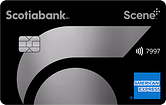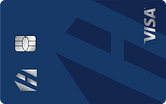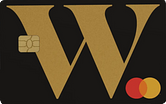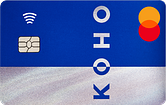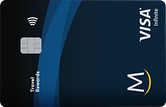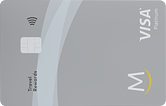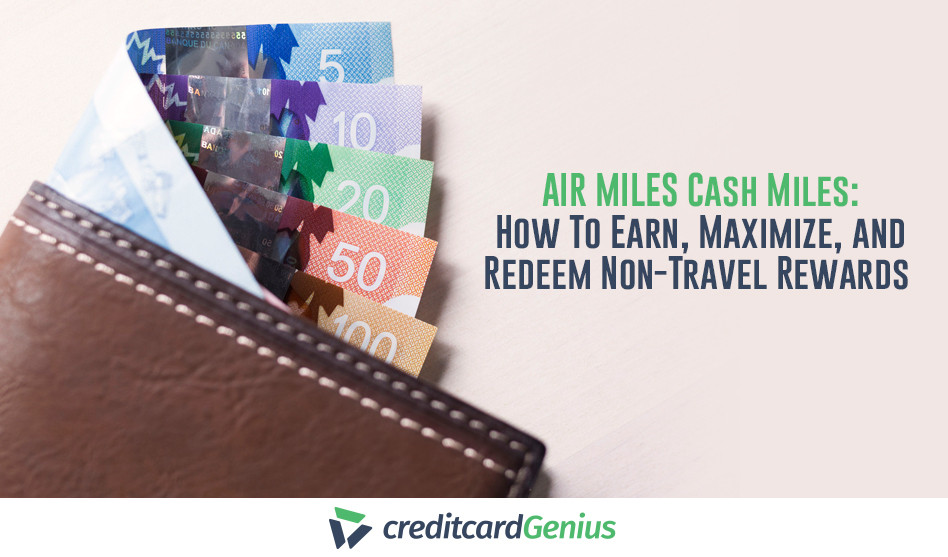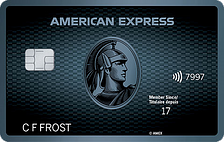Best Foreign Exchange Travel Credit Cards In Canada For 2025
Save on the standard 2.5% currency exchange fee on non-CAD purchases.
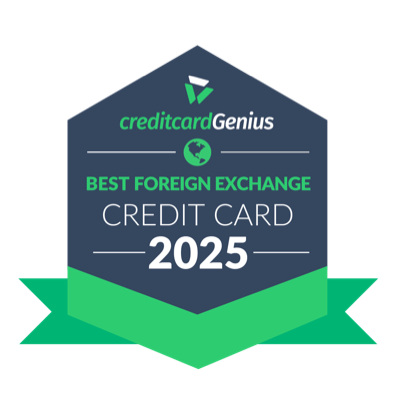
The best foreign exchange travel cards don’t pass the usual 2.5% foreign exchange fee on to their cardholders. Instead, cards like the Scotiabank Gold American Express Card charge no foreign exchange fee, so you can easily use your card abroad without being penalized for every transaction.
Some of the credit cards we reviewed are no annual fee cards, which saves you even more. Don’t overlook the insurance coverage that comes with several of these cards since insurance adds considerable value (and might offset any annual fees).
Key Takeaways
- The Scotiabank Gold American Express Card is our favourite no foreign exchange fee travel card.
- It is possible to get a prepaid or student credit card that waives the foreign exchange fee.
- Consider what insurance coverage you’d like when comparing these travel cards.
Best foreign exchange credit cards in Canada for December 2025
Don’t want to pay a foreign transaction fee? Then check out these cards:
| Category | Credit card | Foreign exchange fee | Annual fee | Current offer |
|---|---|---|---|---|
| Best foreign exchange credit card | Scotiabank Gold American Express Card | 0% | $120 |  $100 GeniusCash + Up to 50,000 bonus points, first year free (terms) $100 GeniusCash + Up to 50,000 bonus points, first year free (terms) |
| Best premium Visa travel credit card for foreign exchange fees | Scotiabank Passport Visa Infinite Card | 0% | $150 |  $100 GeniusCash + 35,000 bonus points (terms) $100 GeniusCash + 35,000 bonus points (terms) |
| Best foreign exchange travel card for the U.S. | Rogers Red World Elite Mastercard | 2.5% | $0 | None |
| Best no fee foreign exchange credit card | Home Trust Preferred Visa | 0% | $0 | None |
| Best prepaid card for no foreign exchange fees | Wealthsimple Prepaid Mastercard | 0% | $0 | None |
| Best premium prepaid foreign exchange card | KOHO Extra Mastercard | 0% | $144 |  $100 GeniusCash + $20 after the first purchase $100 GeniusCash + $20 after the first purchase |
| Best foreign exchange card for students | EQ Bank Card | 0% | $0 | None |
It’s up to you to decide what balance of foreign exchange fees and earn rates you’re looking for in a credit card – for example, the Wealthsimple Prepaid Mastercard doesn’t earn any rewards.

1. Best credit card for no foreign transaction fees
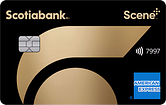
Our top pick for the best no foreign exchange fee credit card is the Scotiabank Gold American Express Card.
In addition to saving on all foreign currency transactions, you get a great earn rate, versatile point redemption, and you kick off your rewards with a 50,000 point sign-up bonus for the Scene+ program.
After that, you’ll earn rewards at the following rates:
- 6 Scene+ points per $1 spent at Sobeys, Safeway, FreshCo and more
- 5 Scene+ points per $1 spent on groceries, dining, and entertainment
- 3 Scene+ points per $1 spent on gas, select streaming services, and transit
- 1 Scene+ point per $1 spent on foreign currency purchases
- 1 Scene+ point per $1 spent on all other purchases
Yes, the card has an annual fee (though with the welcome bonus, it’s waived for the first year) – but if you’re travelling abroad often, you’ll probably find the exchange savings and travel insurance more than make up for the fee.
Pros:
- Up to 6 points per $1 spent on purchases
- 50,000 bonus points
- Four ways to redeem points for high value
- 12 types of insurance
Cons:
- Lower acceptance as an American Express
- No bonus rewards on foreign currency purchases
- High annual fee of $120
Want even more from your Scotiabank Amex card? The Scotiabank American Express Platinum Card has no foreign transaction fee and offers more perks.
2. Best premium Visa travel credit card for foreign exchange fees
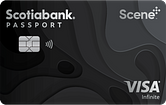
If you want some premium benefits, the Scotiabank Passport Visa Infinite Card is a great option. You’ll get a solid 1.35% average return on your spending with the following rewards:
- 3 Scene+ points per $1 spent at Sobeys, Safeway, FreshCo and more
- 2 Scene+ points per $1 spent on groceries, restaurants, entertainment, and daily transit
- 1 Scene+ point per $1 on all other purchases
Although the card has a $150 annual fee, you’ll enjoy perks like 11 types of insurance and Visa Airport Companion Program membership with six free passes. Start your vacation off right and save money on your foreign purchases!
Pros:
- Up to 3 points per $1 spent on purchases
- 11 types of insurance
- Four ways to redeem points for high value
- Six lounge passes to Visa Airport Companion lounges
Cons:
- High income requirements of $60,000 personal or $100,000 household
- Lower rewards compared to other Visa Infinite cards
- Annual fee of $150
3. Best foreign exchange travel card for the U.S.
If your foreign travels mainly take you just south of the border, the Rogers Red World Elite Mastercard is hard to beat. While the card has high income requirements, a required annual spend, and the standard 2.5% exchange fee, it has no annual fee and using the card regularly quickly makes up for those requirements.
You’ll earn 3% back on all your USD purchases (and 1.5% back on all others). If you have a Rogers service, the company bumps your base earn rate up to 2% cash back. Plus, you’ll get all the standard World Elite Mastercard benefits and a Mastercard Travel Pass lounge membership (no free passes).
Pros:
- 3% cash back on USD purchases
- 1.5% cash back on all purchases (2% if you have a Rogers account)
- 50% bonus when you use your cash back to pay for Rogers services
- 6 types of insurance coverage
- No annual fee
Cons:
- Minimum annual spend of $15,000
- High income requirements of $80,000 personal or $150,000 household
4. Best no annual fee foreign exchange credit card
If you want a no fee card and you don’t meet the Rogers income requirements, the Home Trust Preferred Visa is a good choice. It gives you a straightforward 1% cash back on purchases – though you won’t earn rewards on foreign currency purchases.
While the card doesn’t offer much else, it’s a solid card to have in your wallet and won’t cost you anything to keep there.
Pros:
- 1% cash back on all purchases
- No annual fee
- 1 types of insurance
Cons:
- No welcome bonus
- No rewards earn on foreign currency purchases
5. Best prepaid card for no foreign exchange fees
If you only occasionally make purchases in foreign currency, it may not be worthwhile to get a credit card dedicated to saving on those fees. Instead, perhaps a prepaid credit card is the way to go. We recommend the Wealthsimple Prepaid Mastercard.
This prepaid card has no annual or foreign exchange fees. Load it with some cash and you’re ready to go. When you make purchases, you’ll earn 1% cash back.
This card also acts like a savings account. You’ll earn 2.5% interest on the funds you deposit, so your money will be working for you while it's parked there.
Pros:
- 1% cash back on all purchases
- No credit checks required
- Up to 2.5% interest on your prepaid balance
- No annual fee
Cons:
- No insurance included
6. Best premium prepaid foreign exchange card
The KOHO Extra Mastercard is another great prepaid card to consider. For an annual fee of $144 (or $9 per month), you'll also skip the foreign transaction fees and earn rewards on every purchase.
It works just like the Wealthsimple prepaid card with a higher base earn rate on certain categories. You’ll earn 1.5% cash back on groceries, restaurants, and transportation, and 0.25% cash back on all other purchases. Plus, the money you deposit into your account will earn an impressive 5% interest.
Pros:
- Up to 1.5% cash back on purchases
- No credit check required
- Up to 2.5% interest on your balance
- No annual fee
Cons:
- Doesn’t help build credit
- No insurance included
7. Best foreign exchange card for students
Last on our list is the no fee EQ Bank Card. It’s our top choice for students since there’s no annual fee and it doesn’t require a credit check. Sure, it may not have the insurance or premium benefits of other cards on our list, but it’s great for someone still establishing a credit history.
The earn rate is a little on the low side, but the money you deposit into the account earns you a generous 2.75% interest on your balance.
Pros:
- No annual fee
- No credit check required
- 2.75% interest on your balance
Cons:
- Only 0.5% cash back on purchases
- Doesn’t help build credit
- No insurance included
Compare no foreign exchange fee credit cards


How we get our rankings
To arrive at our list, we evaluated over 126 features of credit cards, broken into seven categories. Then, we ran those features through our algorithm to calculate scores out of five. Since we're talking about the best foreign exchange fee credit cards, we didn’t give extra weight to any category because we’re simply interested in finding the best card overall. We based our rewards on a typical $2,000 monthly spend.
Learn more about our Genius Rating methodology
What is a no foreign transaction fee credit card?
While your credit card does allow you to make purchases in a different country, it usually charges you fees to do so. This is because the card issuer must perform a foreign exchange transaction on the purchase.
For instance, if you make a purchase in a currency other than Canadian dollars, your card issuer converts the transaction into Canadian dollars based on the exchange rates set by the credit card network. If you have an Amex card, they’ll first convert your purchase into U.S. dollars and then into Canadian dollars.
As you might guess, this process can be costly for the card issuer, so most charge an additional exchange rate markup – typically anywhere from 1% to 3% on top of the total transaction. This is the foreign transaction fee.
However, cards with no foreign transaction fees don’t do this, making them one of the best ways to get the most value for non-CAD purchases.
No foreign transaction fee vs. U.S. dollar credit card
No foreign transaction fee cards are simply cards that don’t charge you when they convert your foreign purchases into Canadian dollars. But if you frequently make purchases in U.S. dollars, using a U.S. dollar credit card is another viable option.
With these credit cards, everything is done in USD – so your payments will also need to be in USD. You won’t have any currency conversion fees for USD transactions but it requires you to have a source of USD funds to pay your credit card bill.
Pros and cons of credit cards with no foreign exchange fees
There are plenty of things to like about no foreign exchange fee credit cards, but there are a few downsides to consider, too.
- Save on foreign exchange fees. It may not seem like much, but savings of $2.50 per $100 spent adds up and before long, you’ll have saved a hefty chunk of money just by using the right credit card.
- Various card types. There’s a fairly decent variety of choices in terms of other credit card features you may want – from flexible rewards to cash back to premium perks to no annual fees.
- Good average return rate. Most of our selected cards have solid earn rates, averaging from 1% to 2.08% returns.
- Included insurance coverage. Most foreign exchange travel cards offer some level of insurance coverage, with values ranging from $20 to over $500 per year.
- Excellent perks. For those who like the other things credit cards have to offer, these cards provide a lot of value for the perks they provide. For instance, you might get lounge access or discounts for select retailers or services.
- Few cards to choose from. For all that's good about them, there aren't many no foreign exchange fee credit cards in Canada. Of the
231 cards we track, only a handful waive the fee entirely, earn bonus rewards on foreign purchases, or have a discounted fee of less than 2.5%. - No low interest cards. If you typically carry a balance on your credit card, you won’t find any options with lower interest rates here. Balance transfer offers are also noticeably absent among this group. (Of course, prepaid cards don’t charge any interest.)
How to choose a credit card with no FX fees
Since credit cards are personalized financial products, it helps to know what you want out of a credit card before you apply for one. Sure, you’re looking for a card with no foreign exchange fees and that can help you narrow your options.
But you’ll also want to consider other aspects of your dream card. Do you value cash back? Rewards? You’ll also want to check out potential cards’ interest rates, fees, and eligibility requirements.
If you want help finding a great foreign exchange travel card, take our quiz to determine which one is right for you..
How to maximize value when using your credit card abroad
Before you even leave the country, notify your credit card issuer of your travel plans. They’ll usually ask what countries you’ll be travelling to and they’ll note the details on your account. This quick phone call can prevent your card from being frozen while you’re travelling.
Once you’re happily on your way, there are a few more tips for using your card:
- Choose the local currency when shopping: If you have the option, select the local currency when you’re at the register. This can avoid dynamic currency conversion fees (and terrible exchange rates).
- Learn about the current exchange rate: You might be tempted to use currency exchange kiosks since they’re often convenient. However, if you compare their exchange rates to those offered by credit card networks like Visa and Mastercard, you’ll probably find it’s better to use your card.
- Avoid using ATMs: You’ll be hit with additional ATM withdrawal fees if you take money out in a foreign country unless you have a card that specifically reimburses these fees. Instead, make purchases with your card or head to a partnering bank to take out money.
Is a credit card with no FX fees worth it?
The answer depends on how you use the card. If you’re paying an annual fee and not using the card very much, you might be better off using a card with standard FX fees occasionally.
On the other hand, if you frequently travel outside of the country or make frequent purchases from international websites, the savings add up.
Think about it – if you regularly travel abroad for work or pleasure, you’re probably using your card for accommodations, transit, dining out or buying groceries, and odds and ends. If you’re saving 2.5% on each transaction, a no foreign exchange fee card is probably worth it.
What users say
Redditors have quite a lot to say about using no fx fee cards. Several reported trouble using the Home Trust Preferred Visa due to a transaction limit and limited acceptance by vendors.
Others reported better luck using the Wealthsimple and/or EQ Bank cards, although some noted that there are quite a few countries that don't accept the Wealthsimple Prepaid Mastercard.
To sum it up, before applying, you should read up on which credit cards are primarily accepted in the countries where you know you’ll be travelling. For example, if you’ll just be travelling to the US, it makes sense to get a USD credit card (and might even earn you some perks!) before applying for a no fx fee card
FAQ
Which credit cards don't charge a foreign transaction fee?
There are several credit cards from a few different issuers that offer credit cards that don’t charge foreign transaction fees. Scotiabank, Home Trust, KOHO, Wealthsimple, and EQ Bank all issue reputable no-FX fee credit cards in Canada.
Which TD card has no foreign transaction fee?
The TD U.S. Dollar Visa Card doesn’t charge a foreign transaction fee, but it charges an annual fee and doesn’t offer any rewards. You’ll also need a U.S. dollar bank account to pay the credit card bill.
How can you tell if your credit card has no foreign transaction fees?
Read through your credit card agreement, check your statement for listed fees, or look on the credit card website to see if you’ll be charged a fee (typically 2.5%) on transactions not in Canadian dollars.
Can I use a no-foreign-transaction-fee credit card in any country?
You can usually use credit cards with no foreign transaction fee in any country – but always read the fine print to learn if there are exceptions. For example, some cards may only waive the fees for purchases in USD.
Does using my card abroad always cost more?
Using your credit card in a foreign country won’t necessarily cost more if you’re using a foreign exchange travel card that doesn’t add foreign exchange fees. Several on our list don’t charge for foreign transactions.
Can I get Canadian credit card protection abroad?
Every card and issuer has a unique policy, so carefully read your card’s certificate of insurance to determine whether it includes travel insurance coverage. You should be able to contact your credit card issuer with concerns while you’re travelling.
How is the exchange rate determined on my credit card?
Your credit card network sets exchange rates every day. This is the rate that’s used when your foreign purchase is processed. Then, the card issuer may add a foreign transaction fee to cover the cost of the transaction.
Editorial Disclaimer: The content here reflects the author's opinion alone. No bank, credit card issuer, rewards program, or other entity has reviewed, approved, or endorsed this content. For complete and updated product information please visit the product issuer's website. Our credit card scores and rankings are based on our Rating Methodology that takes into account 126+ features for each of 231 Canadian credit cards.



 ×1 Award winner
×1 Award winner 
